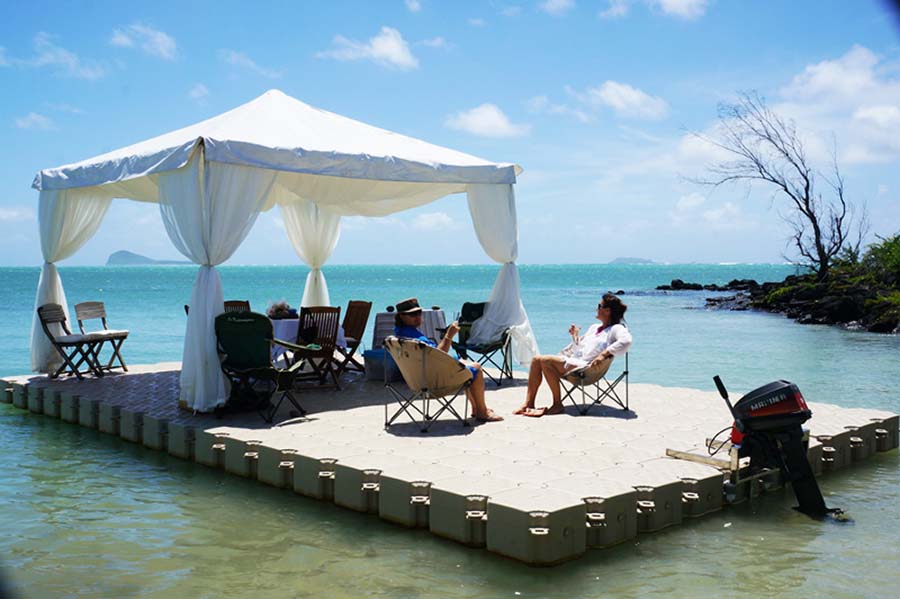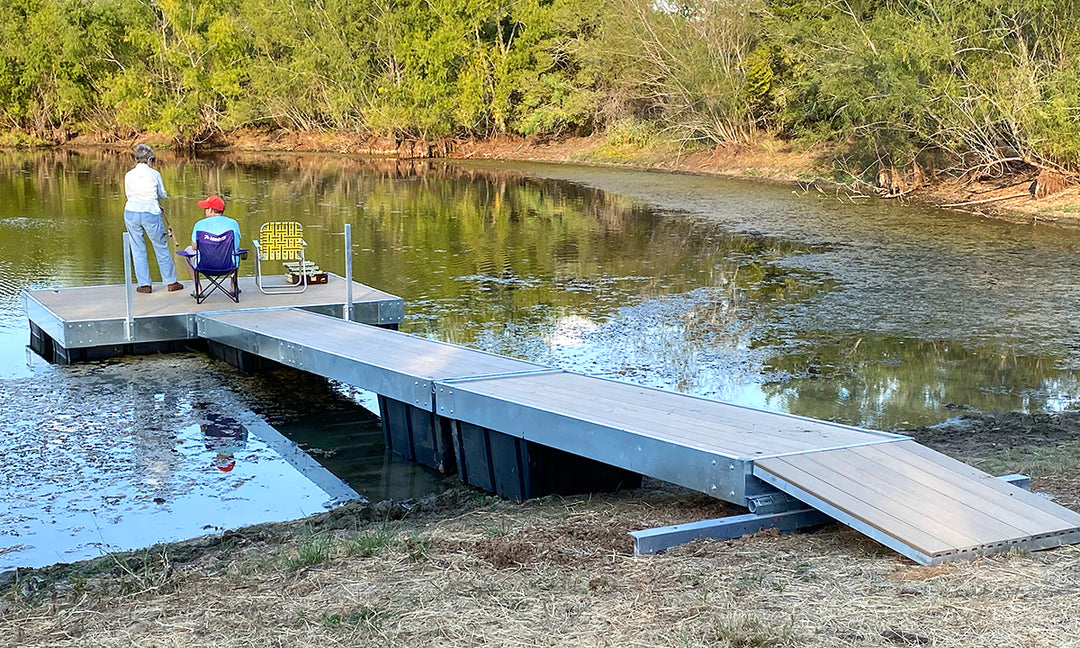Navigating the Options: Choosing the Right Dock Company for Your Floating Dock Project
Navigating the Options: Choosing the Right Dock Company for Your Floating Dock Project
Blog Article
Produce the Perfect Docking Option With Floating Docks
Floating docks existing a versatile solution for a selection of maritime requirements, adapting flawlessly to changing water degrees and varied vessel types. As we explore the crucial aspects that contribute to the performance of floating docks, several crucial elements regarding stability and upkeep will arise, raising inquiries about just how to optimize your docking experience.

Advantages of Floating Docks
Floating docks deal various benefits that make them an optimal selection for different maritime applications. Among the main advantages is their versatility to transforming water levels. Unlike taken care of docks, floating docks rise and loss with the tide, ensuring regular accessibility for vessels. This function is particularly vital in areas vulnerable to substantial tidal changes or seasonal water level changes.
In addition, floating docks are normally much easier and quicker to install contrasted to conventional fixed frameworks. Their modular design permits uncomplicated assembly and disassembly, helping with upkeep and relocation when essential. This adaptability is especially helpful for short-term applications or in atmospheres where conditions might alter.
Floating docks also have a tendency to be much more eco-friendly, as they minimize interruption to the seabed and surrounding water environments. Their resilient nature reduces the risk of damages to aquatic life, promoting a healthier atmosphere. These docks can be personalized to accommodate numerous vessel dimensions, making sure that they fulfill details functional demands.
Inevitably, the combination of flexibility, simplicity of installation, and ecological factors to consider makes floating docks a very efficient remedy for a variety of maritime requirements.
Choosing the Right Materials
Choosing the appropriate materials for floating docks is crucial to ensure stability, toughness, and longevity. The selection of materials directly affects the dock's performance in various ecological conditions, including direct exposure to water, sunlight, and prospective wear from marine website traffic.
Typical materials used for floating docks consist of aluminum, timber, and high-density polyethylene (HDPE) Aluminum is light-weight, corrosion-resistant, and needs marginal upkeep, making it a superb choice for longevity. However, its initial expense can be greater contrasted to other materials.
Wood, while aesthetically appealing and giving a traditional appearance, can be at risk to rot and pest damage if not properly dealt with. Consequently, making use of pressure-treated timber or naturally durable types like cedar or redwood can alleviate these issues.
HDPE is a popular selection because of its resistance to UV rays and chemicals, along with being eco-friendly. dock company. It is light-weight and available in numerous colors, permitting modification
Eventually, the best product option will certainly depend upon certain requirements, including budget, wanted visual appeals, and ecological factors to consider. Careful analysis of these elements will certainly result in a effective and resilient floating dock option.
Layout Considerations for Security
When designing floating docks, making certain stability is a fundamental aspect that can significantly influence their performance and security. Stability in floating dock layout is affected by different variables, consisting of buoyancy, weight circulation, and the setup of parts.
Weight circulation is vital; equally distributing loads across the dock prevents turning and improves security. Broader styles can provide increased security, especially in rough water problems, while longer docks might call for additional assistances to stop sagging.
An additional crucial consideration is the ecological effect, including wave activity and wind. Integrating features such as sidewalls or skirting can assist reduce the results of environmental forces, preserving stability in damaging conditions. Inevitably, a combination of thoughtful style, product choice, and understanding of ecological elements will certainly produce a drifting dock that satisfies both security and security needs.
Setup Tips and Strategies

Next, protect the required permits and adhere to local regulations, which may determine installment approaches and ecological factors to consider. Engage a qualified contractor experienced in floating dock installments if needed. Use top quality materials designed for aquatic atmospheres to improve sturdiness and durability.
When placing the dock, straighten it identical to the coastline to help with easy accessibility. Make sure that the anchoring system is robust, using concrete blocks or helical anchors to stabilize the dock versus wind and wave action. It's important to account for seasonal water degree changes, including possible ice motion in cooler climates.
Throughout the setup, confirm the dock's floatation and security before wrapping up the anchoring. Consistently check the installation for any type of signs of wear or damages. By following these strategies and suggestions, you can attain a protected, useful, and visually helpful hints pleasing floating dock installation that fulfills your needs.
Upkeep and Care Guidelines
Caring and keeping for floating docks is essential to lengthening their lifespan and guaranteeing risk-free use. Regular inspections ought to be carried out to recognize any kind of indicators of wear, damages, or aquatic development. Seek splits, loosened installations, or discolored areas on the dock's surface, as these issues can compromise structural stability.
Cleaning up is necessary. Make use of a pressure washer to get rid of algae, barnacles, and particles, which can accumulate over time. For stubborn growth, consider eco-friendly cleaner that will not damage marine life.
In addition, inspect the mooring lines and supports often to ensure they check out here are totally free and protected from deterioration. Change any type of frayed or damaged lines promptly to maintain security.
During extreme weather, such as tornados or freezing problems, take precautionary steps. Secure the dock with added mooring lines and, if viable, get rid of any type of detachable parts to stop damages.
Final Thought
Finally, the implementation of floating docks presents a effective and versatile docking remedy appropriate for various maritime applications. Their flexibility to changing water levels, incorporated with a modular style, enables very easy personalization and relocation. Picking suitable products improves both sturdiness and visual charm, while careful factor to consider of stability makes certain security and longevity. With proper setup and regular upkeep, floating docks can give trusted and efficient docking experiences for a large range of vessels.
As we explore the necessary components that contribute to the efficiency of floating docks, numerous key elements relating to security and upkeep will emerge, raising concerns concerning how to optimize your docking experience. Unlike repaired docks, floating docks increase and loss with the trend, guaranteeing constant availability for vessels.When making floating docks, ensuring stability is a fundamental aspect that can substantially impact their capability and safety and security. Security in floating dock layout is affected by different aspects, consisting of buoyancy, weight circulation, and the setup of parts. Inevitably, a combination of thoughtful design, material selection, and understanding of ecological factors will yield a drifting dock that satisfies both security and safety requirements.
Report this page